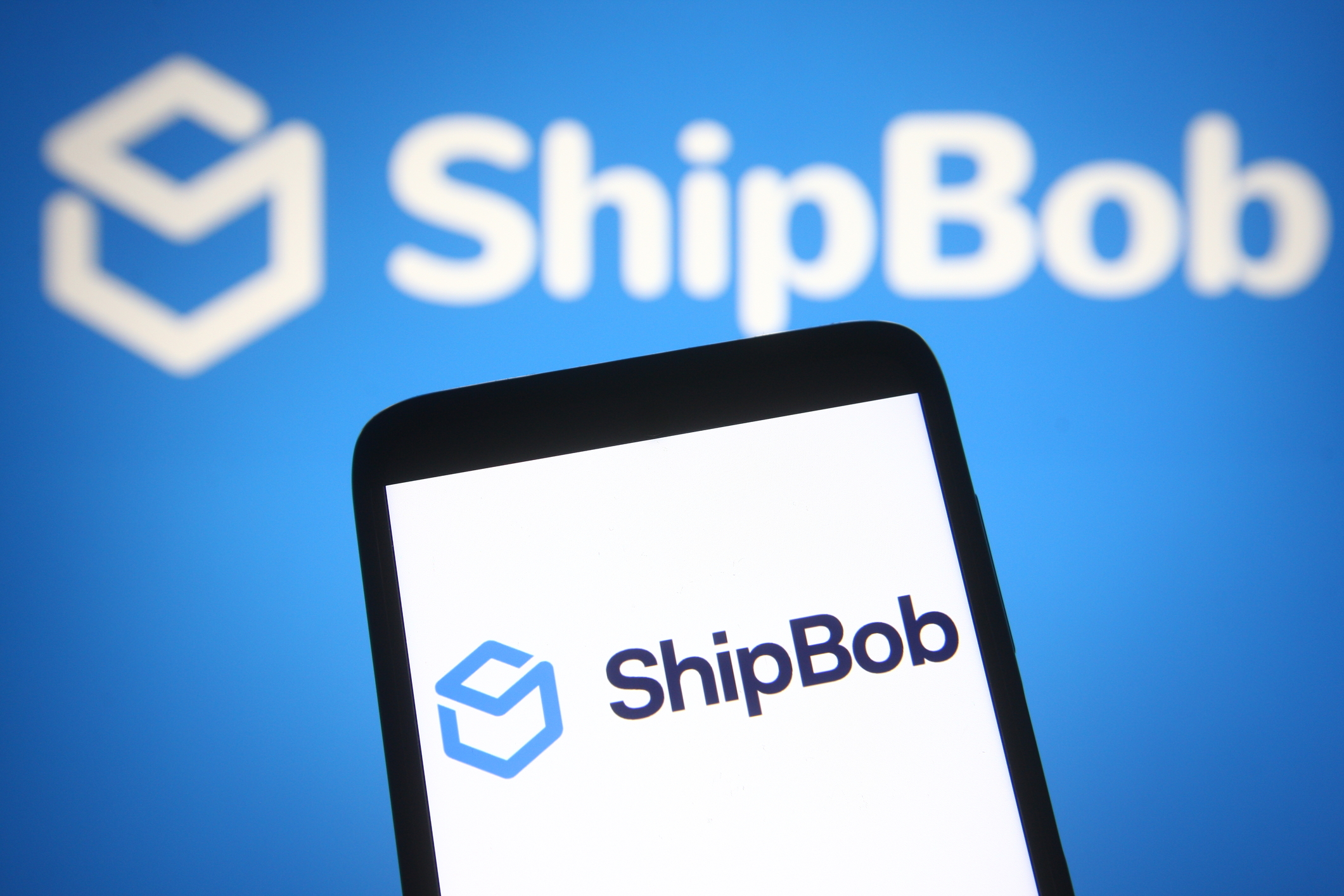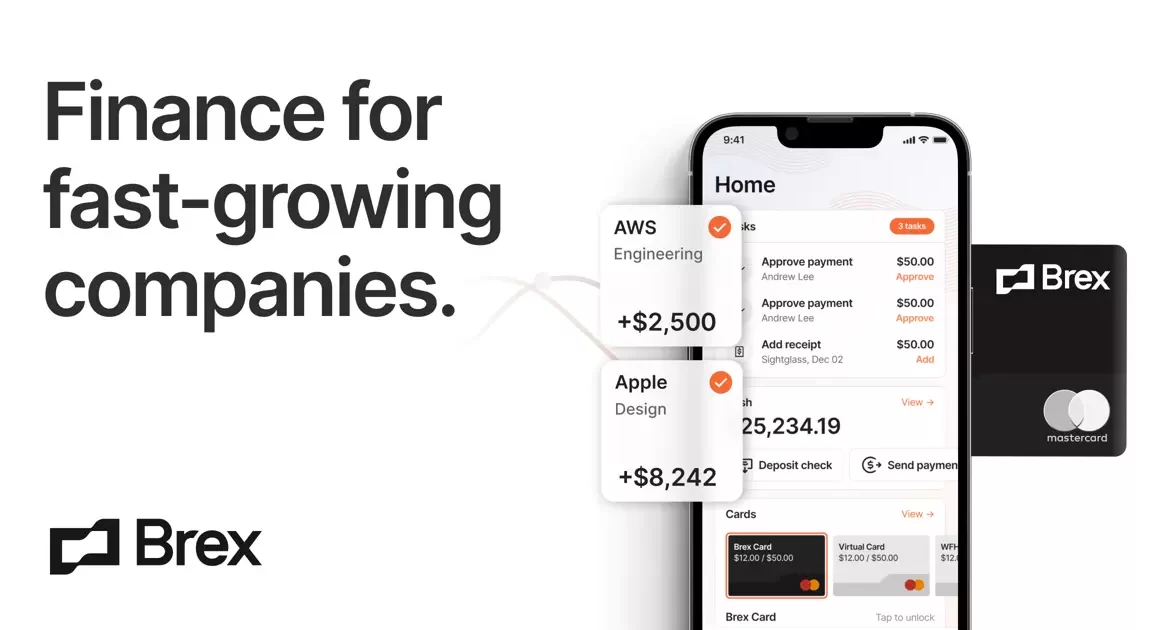In the dynamic realm of e-commerce, where speed and efficiency are paramount, the emergence of ShipBob has been nothing short of a game-changer. This introduction unveils the captivating journey of ShipBob, a startup that has disrupted the logistics industry and redefined the way businesses navigate the complex terrain of order fulfillment and shipping.
Founded in 2014 by Divey Gulati and Dhruv Saxena, ShipBob was born out of a simple yet profound realization – that the logistics and fulfillment challenges faced by e-commerce businesses were ripe for innovation. With a shared vision of simplifying the fulfillment process for online retailers, the co-founders embarked on a mission to create a platform that would empower businesses of all sizes to compete on a level playing field with industry giants.

At its core, ShipBob is a tech-driven fulfillment and shipping solution that caters to the evolving needs of e-commerce businesses. By leveraging a network of strategically located fulfillment centers across the United States, ShipBob enables retailers to store their products in proximity to their customers, significantly reducing shipping times and costs.
ShipBob is a global omnifulfillment solution trusted by 5,000+ brands to ship orders from everywhere their customers shop. From memorable unboxing experiences to faster shipping, ShipBob provides best-in-class supply chain solutions and fulfills global orders from the US, UK, EU, Canada, and Australia.
One of the pivotal elements of ShipBob’s success story lies in its commitment to providing businesses with end-to-end transparency and control over their supply chain. Through a user-friendly dashboard, clients can seamlessly manage their inventory, orders, and shipping, gaining real-time insights into their operations.
The startup’s rise to prominence has been fueled by its dedication to innovation. ShipBob has harnessed cutting-edge technology, including machine learning and data analytics, to optimize inventory management, order routing, and carrier selection. This approach not only enhances efficiency but also ensures a seamless customer experience.
ShipBob’s value proposition extends beyond technology; it encompasses a customer-centric philosophy. The company prides itself on its dedicated customer support team, ready to assist clients with any inquiries or challenges they encounter along their fulfillment journey.
Setting Sail: The Founding History of ShipBob
The story of ShipBob begins with the shared vision of two entrepreneurs, Divey Gulati and Dhruv Saxena, who recognized a pressing need in the rapidly growing e-commerce industry. Their journey to revolutionize order fulfillment and logistics would eventually lead to the creation of ShipBob in 2014. Let’s delve into the founding history of ShipBob, a company that has redefined how e-commerce businesses manage their supply chains.
Identifying a Gap in E-Commerce:
- Early Beginnings: Divey Gulati and Dhruv Saxena both had backgrounds in e-commerce. Gulati had worked for an e-commerce startup, while Saxena had experience in supply chain management. Their combined expertise led them to recognize a significant gap in the industry – the need for streamlined and efficient order fulfillment services for e-commerce businesses of all sizes.
- Complexity in Logistics: At the time, e-commerce entrepreneurs were grappling with the complexities of order processing, inventory management, and shipping. Smaller businesses struggled to compete with larger e-commerce giants, who had the resources to build sophisticated fulfillment networks.
The Birth of ShipBob:
- Inception: With a clear understanding of the challenges faced by e-commerce entrepreneurs, Gulati and Saxena decided to take matters into their own hands. They co-founded ShipBob in Chicago in 2014, with the mission of simplifying the order fulfillment process for online retailers.
- Tech-Enabled Fulfillment: From the outset, ShipBob embraced technology as a cornerstone of its business model. The founders envisioned a tech-enabled third-party logistics (3PL) company that would use proprietary software to optimize order fulfillment and inventory management.
Early Challenges and Growth:
- Building the Foundation: In its early days, ShipBob faced the typical challenges that accompany startup ventures. However, Gulati and Saxena were determined to build a robust fulfillment network that could cater to businesses seeking fast and efficient order processing.
- Expanding the Network: As ShipBob gained traction, it expanded its fulfillment network strategically. The company established fulfillment centers in key locations across the United States, ensuring that inventory could be stored in proximity to customers, reducing shipping times and costs.
A Solution for E-Commerce Businesses:
- Customer-Centric Approach: ShipBob’s success can be attributed to its unwavering commitment to customer satisfaction. The company offered e-commerce businesses an end-to-end solution that simplified order fulfillment, provided real-time visibility into operations, and improved shipping efficiency.
- Catering to Diverse Needs: ShipBob’s adaptability allowed it to cater to the diverse needs of e-commerce businesses, from startups seeking rapid growth to established brands looking to scale their operations. This flexibility was instrumental in attracting a wide range of clients.
A Disruptive Force in Logistics:
- Changing the Game: ShipBob’s innovative approach to logistics disrupted the industry. By leveraging technology and strategically located fulfillment centers, the company provided businesses with the tools they needed to compete effectively in the e-commerce landscape.
- Expanding Services: Over the years, ShipBob expanded its services to include subscription box fulfillment, branded packaging, and international shipping solutions. This evolution mirrored the changing needs of its clients and ensured continued relevance in the market.
ShipBob’s founding history is a testament to the power of identifying a pressing need in the market, leveraging technology to provide a solution, and maintaining a relentless focus on customer satisfaction. Today, ShipBob stands as a pioneer in the e-commerce fulfillment industry, empowering businesses of all sizes to streamline their supply chains and deliver exceptional customer experiences.
ShipBob Business Model – How ShipBob Works?
In the fast-paced world of e-commerce, efficient order fulfillment is the lifeblood of success. ShipBob, a tech-enabled third-party logistics (3PL) provider, has redefined how businesses manage their supply chain. Here’s a comprehensive look at how ShipBob works and why it has become a game-changer for e-commerce entrepreneurs seeking to streamline their operations.

Tech-Enabled 3PL Expertise:
- Proprietary Software: ShipBob employs cutting-edge proprietary software that seamlessly integrates with its extensive fulfillment network. This technology-driven approach ensures a cohesive and efficient experience for businesses.
- Automated Order Processing: When a customer places an order on your e-commerce store, ShipBob’s system automatically forwards the order to the nearest fulfillment center. This automation minimizes processing time and expedites order fulfillment.
- Inventory Management: ShipBob securely stores your inventory in strategically located fulfillment centers. This distributed inventory approach ensures that products are close to your customers, reducing shipping times and costs.
Streamlined Fulfillment Process:
- Order Fulfillment: ShipBob’s warehouses are equipped to handle the entire fulfillment process. This includes picking products from inventory, packing orders with precision, and swiftly dispatching them to customers.
- Fast Shipping: ShipBob employs an algorithm that selects the most efficient warehouse and carrier for each order. This strategy minimizes shipping distances and costs, ensuring that customers receive their orders quickly.
- 2-Day Express Shipping: ShipBob’s 2-Day Express Shipping Program sets a new standard for fast delivery. This program enables e-commerce businesses to offer two-day shipping as the norm, reducing cart abandonment rates and increasing average order values.
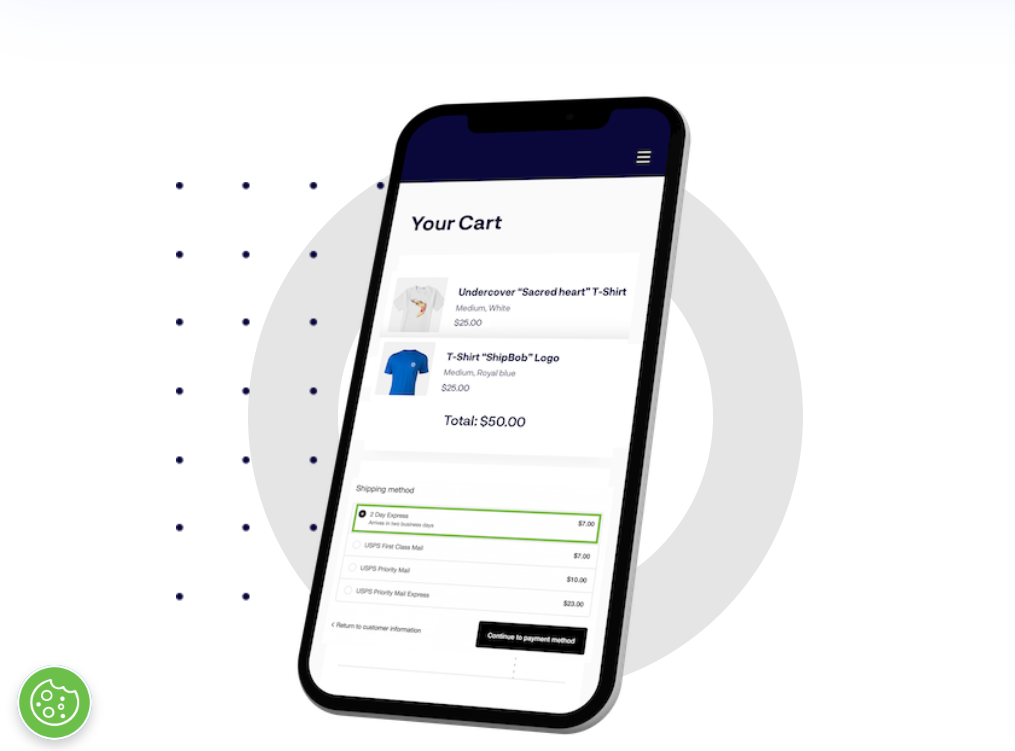
User-Friendly Onboarding:
- Turnkey Integrations: ShipBob offers seamless integrations with major e-commerce platforms and marketplaces, such as Shopify, BigCommerce, Amazon, and Walmart. This simplifies the onboarding process, allowing businesses to import orders and maintain a two-way flow of data effortlessly.
- Implementation Support: ShipBob’s dedicated implementation team ensures that businesses are set up for success. They assist in configuring shipping options and syncing online stores for a smooth transition.
Robust Order and Inventory Management:
- Order Tracking: ShipBob provides end-to-end order tracking, allowing businesses to monitor orders’ progress from placement to delivery. This transparency enhances customer satisfaction.
- Inventory Oversight: ShipBob’s inventory management software empowers businesses to track inventory levels across multiple locations, identify slow-moving stock, and make data-driven decisions about replenishment and bundling.
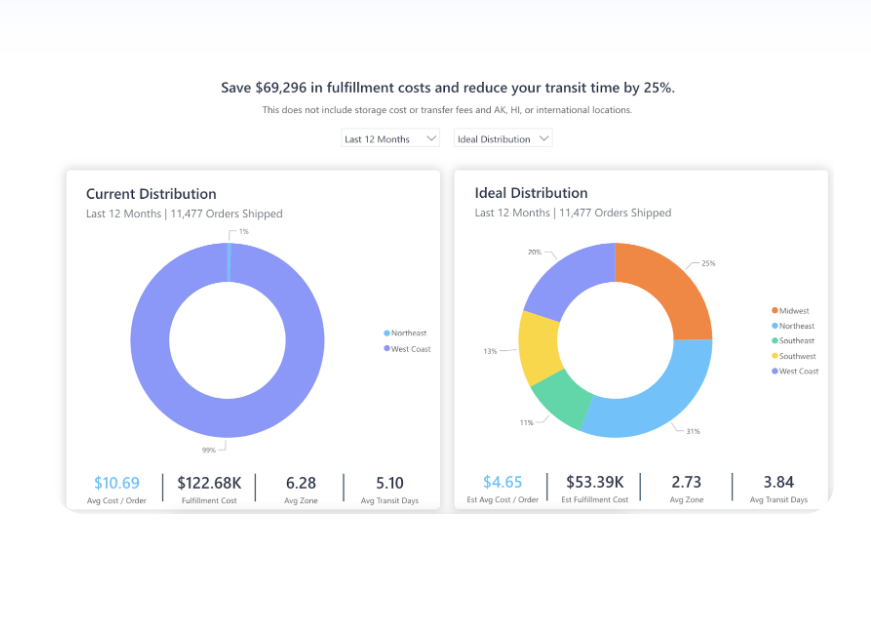
Reporting and Analytics:
- Data-Driven Insights: ShipBob offers robust reporting and analytics tools, providing businesses with visibility into their operations. These insights include inventory analysis, shipping performance, fulfillment costs, and more, helping businesses make informed decisions.
End-to-End Customer Experience:
- Custom Branding: ShipBob collaborates with businesses to create a tailored unboxing experience, from custom-branded boxes to packaging that aligns with your brand’s identity.
- Fast and Cost-Effective Shipping: ShipBob helps businesses offer competitive shipping options that meet customer expectations. Tracking information is seamlessly integrated into your store, ensuring customers stay informed.
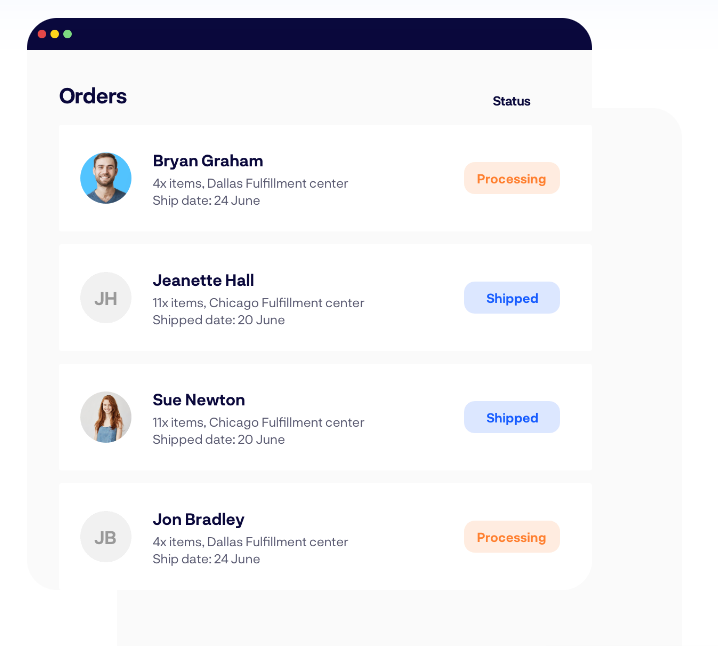
- Return Management: ShipBob streamlines the return process, enabling customers to generate return shipping labels and track returns. Returned products are efficiently processed and returned to available inventory.
In summary, ShipBob has revolutionized e-commerce fulfillment by seamlessly integrating technology, strategically located fulfillment centers, and an unwavering commitment to customer satisfaction. This comprehensive approach empowers businesses to optimize their supply chain, deliver exceptional customer experiences, and thrive in the competitive world of e-commerce.
ShipBob Revenue Streams – How does ShipBob make money?
ShipBob bills its extensive client base, numbering over 7,000, for their utilization of order fulfillment and shipping logistics services. The company reported a revenue of $44.1 million in 2022, and it remains financially sound, consistently reinvesting its earnings into its operational growth. The injection of $200 million in capital, secured in June 2021, is earmarked for further expansion initiatives.
ShipBob’s pricing strategy for its growth plan adheres to a standardized fee structure, tailored to accommodate clients who ship anywhere from 1 to 400 items per month. This pricing structure encompasses several components:
- A fee for inventory reception, which amounts to $25 for the initial two hours and $40 per hour beyond that timeframe.
- A monthly charge related to the warehousing of products, computed at $40 per pallet, $10 per shelf, and $5 per bin.
- A charge for each shipped order, encompassing expenses for packaging, labor, and shipping costs. The exact cost varies and is contingent upon factors such as the weight, dimensions, destination, and the chosen shipping service.
- The service includes up to four picks per order, with an additional cost of $0.20 per pick should there be a need for more.
Valuation, Funding and Investors of ShipBob
Valuation of ShipBob
In June 2021, ShipBob has has raised $200 million led by Bain Capital Ventures, with SoftBank, Menlo Ventures, Hyde Park Venture Partners, Hyde Park Angels and Silicon Valley Bank pushing its valuation to over $1 billion, doubling its valuation compared to its last round, a Series D that it closed in September 2020.
Funding of ShipBob
ShipBob has raised a total of $330.5M in funding over 8 rounds. Their latest funding was raised on Jun 29, 2021 from a Series E round. ShipBob is funded by 34 investors.
| Round | Date | Amount | Investors |
| Series A | May, 2016 | $4 million | Hyde Park Venture Partners, Y Combinator, StartCap Ventures, NFQ Capital,Network Ventures |
| Series B | June, 2017 | $17.5 million | Bain Capital Ventures |
| Series C | Sept, 2018 | $40 million | Menlo Ventures, Bain Capital Ventures, Hyde Park Venture Partners, Hyde Park Angels and Y Combinator |
| Series D | Sept, 2020 | $68 million | SoftBank Vision Fund 2, Menlo Ventures, Bain Capital Ventures, Hyde Park Venture Partners, Hyde Park Angels and Y Combinator |
| Series E | June, 2021 | $200 million | Bain Capital Ventures, SoftBank, Menlo Ventures, Hyde Park Venture Partners, Hyde Park Angels, and Silicon Valley Bank |
In conclusion, ShipBob stands as a beacon of innovation and efficiency in the realm of e-commerce logistics and order fulfillment. From its humble beginnings, founded on the visionary insights of Divey Gulati and Dhruv Saxena, to its current status as a robust tech-enabled 3PL provider serving over 5,000 clients, ShipBob has transformed the way businesses navigate the complexities of supply chain management.
With a customer-centric approach, a commitment to leveraging technology for operational excellence, and a constant drive for expansion and improvement, ShipBob has not only redefined logistics but also empowered countless e-commerce enterprises to thrive in the digital age.
As ShipBob continues to grow, propelled by recent investments, its legacy of simplifying the logistics puzzle and fueling the success of e-commerce ventures is bound to shine even brighter in the years to come.
Also Read: Outreach – Founders, Business Model, Funding & Competitors
To read more content like this, subscribe to our newsletter
